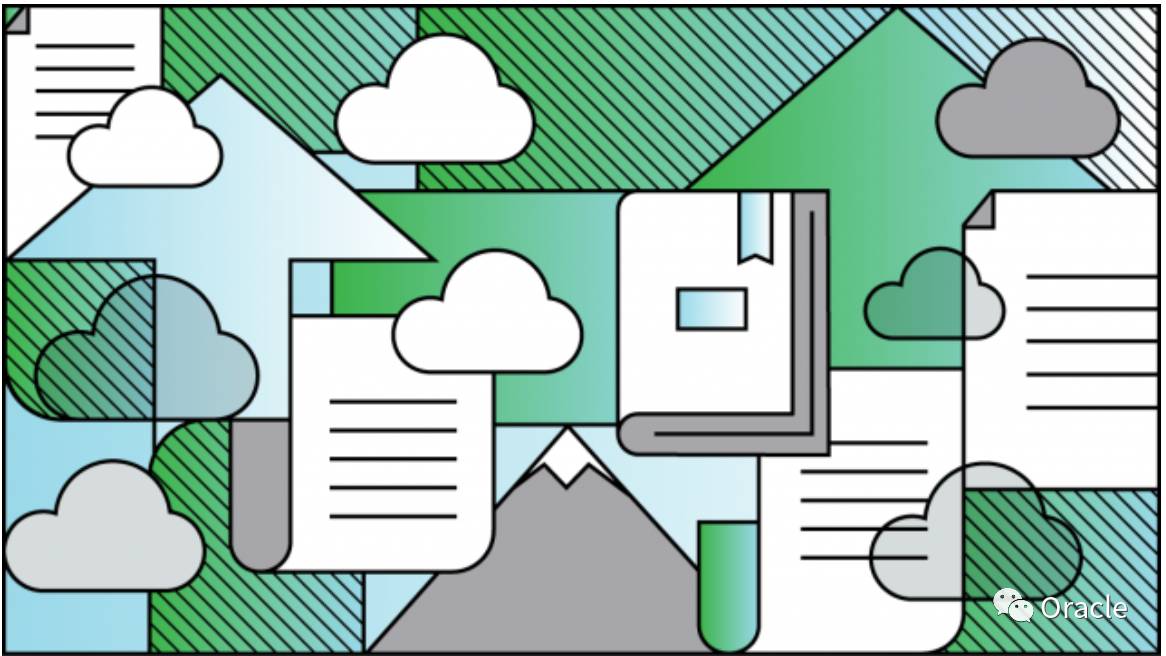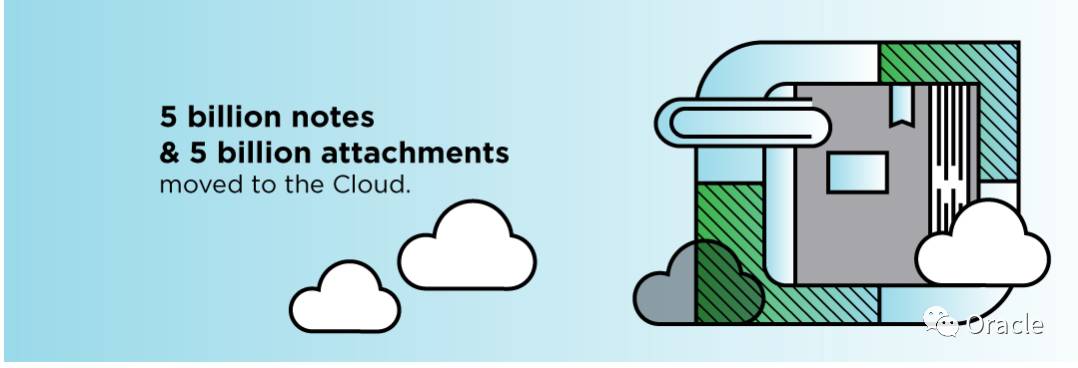编辑手记:Evernote完成了向Google 云上的迁移,70天完成了超过3PB的数据,数据相当于历史上出版过书籍的10倍,而对于每天都使用Evernote的用户,完全没有感知到整个迁移过程。
本文来自Evernote官方文档翻译,如有不恰当的地方,请参考原文。

Back in September, we announced that Evernote would be migrating to a modern, cloud infrastructure. We lost no time in getting started. Just one month after the announcement, we were already moving data to the Google Cloud Platform. We’re excited to announce that Evernote has successfully migrated our service to the cloud, and accomplished this with minimal impact on our customers.
去年九月的时候,我们宣布将要把Evernote迁移到一个现代化的云基础设施上,并在公告发布以后,立即着手做。一个月之后,我们已经将数据迁移到了Google 的云平台上了,今天我们很自豪地宣布,我们已经将Evernote成功地迁移到了云上,并在整个过程尽可能减少了对用户的影响。
Because this migration took place in the background, you wouldn’t have noticed any changes to your day-to-day experience in Evernote. For engineers who understand the technical complexities involved with moving large amounts of data into the cloud quickly and safely, Evernote’s migration to the cloud was monumental.
因为迁移是在后台完成的,哪怕对于每天都在使用Evernote的用户来说,都不会明显感觉到有什么变化。快捷安全地将大量数据迁移至云端并不是一件容易的事情,我相信对于每一个能理解到背后的技术复杂性的人都承认,Evernote的成功迁移是非常具有纪念意义的。

What we did
To borrow from the analogy of moving to a new house: At first glance, Evernote’s new home in the cloud may not look all that different, but it’s built on a much stronger foundation, sits on a larger lot, comes with new plumbing, and even has an upgraded alarm system. Overall, it’s a much better place to live.
打一个简单的比方,就像人搬新家一样,第一眼看去Evernote的新家跟以前没有太大的变化,但是新家建立在更强大的基础上,建立在更广阔的地段,并且设置了新的管道,有升级版的警报系统,因此整体看来,Evernote在云上的新家对数据来说上更好的归属。
Rather than pouring resources into the day-to-day maintenance of equipment and software required for running the Evernote service, we can now focus more of our time and energy into responding to customer needs. Though subtle at first, this move to the cloud will bring about more noticeable benefits in the not-so-distant future, such as increased uptime, security improvements, and faster delivery of new and innovative features.
比起之前将资源投入到运行Evernote服务所需的设备和软件的日常维护中,我们现在可以将更多的时间和精力用于响应客户需求。尽管这种变化在起初是微妙的,但是这种向云的转移在不久的将来带来更显着的好处,例如延长正常运行时间,安全改进以及更快速地提供创新的功能等。
What we achieved
Although every engineering endeavor is different and encounters unique challenges, cloud migration efforts of this magnitude usually take longer than expected (9-12 months) and consume more resources than originally estimated.
然而迁移到云端这项工程并不容易,可能会遇到很多特殊的挑战。比如大规模的迁移消耗的时间可能比预期会长9-12个月,并且会耗费更多的资源。

Driven by our commitment to minimizing disruptions to your service, we did it in just 70 days. In this short time frame, we successfully moved 5 billion notes and 5 billion attachments over to our new cloud-based infrastructure. That’s over 3 petabytes of data. To give you some context, that’s equivalent to moving enough content to fill up 10+ copies* of all the books ever published in all of modern history.
在我们致力于最大程度减少服务中断的驱动下,我们在短短70天内完成了这项工作。 在这短暂的时间内,我们成功地将50亿份笔记和50亿个附件文件转移到了新的基于云的基础设施上。 本次迁移的数据超过3 PB,这相当于移动足够的内容来填充所有在现代历史上出版的所有图书的10多个副本。

Although no physical moving vans or boxes were required, Evernote took extreme precautions to ensure that all the data was packaged properly, systematically organized, and safely transported. We started by transporting just a few items at a time, then moved more data over once we were 100% certain it was safe to do so.
虽然不需要物理移动的货车或箱子,但Evernote需要制定精确的预防措施,以确保所有数据都正确打包,系统组织和安全运输。 我们开始时一次只传输了几个项目点数据,在确保数据安全之后,然后再移动更多的数据。
A faster, more reliable Evernote
So what benefits can you expect to see once we’ve completely settled into our new home in the cloud?
当我们完全将所有的数据迁移到云上的新家的时候,你期望看到什么样的新特性或者优势呢?
For many, Evernote is an extension of their minds, so security has always been of utmost priority. With encryption at rest and improved disaster recovery planning, we can provide an extra layer of protection for your thoughts and ideas.
对于大多数人来说,Evernote作为一种常用的笔记,是思想的一种延伸,因此安全是大家最关注的。而我们将会通过静态加密手段和增强的灾难恢复原,为用户的思想加强防护。
It’s common practice to encrypt data when it’s being transferred from one place to another so it can’t be read, even if it’s intercepted. The concept of ‘encryption at rest,’ however, means that your data is protected, even when it is not being moved anywhere. Disaster recovery planning ensures that we are better equipped to restore the Evernote service smoothly and quickly, in the unlikely event of a major disaster.
通常的做法是:
- 当数据从一个地方传输到另一个地方时对其进行加密,因此即使被拦截也无法读取。事实上,静态加密的概念意味着数据被保护,哪怕不做任何迁移,数据本身就是被保护的。
- 灾难恢复计划确保我们更好地准备好恢复Evernote服务平稳和快速,哪怕在不太可能发生的重大的灾难下。
What’s next?
Now that we’ve hit our audacious goal and reached the cloud, we’re already putting these advantages to work. Stay tuned for more news as we build the next generation of Evernote—one that will help you get more done with speed, security, and peace of mind.
现在我们已经基本上实现了我们的目标,顺利到达云端,并且在我们的工作中利用云的优势。我们会在开发下一代Evernote的时候,在速度、安全性方面做更多的改进,用用户更安心。感谢您的持续关注。
For more technical details about how we achieved the cloud migration, visit the Evernote Tech Blog。
关于更多有关迁移的技术细节,请参考Evernote的技术博客。
Note: There have been approximately 150 million books published in the modern world. Each book would take 2 MB of computer space to store. All books published in the modern world = 300 million MB = 0.3 PB. We moved 3 PB. This is equivalent to moving an estimated 10x the number of books have ever been published in all of modern history.
注:现在世界上出版了约1.5亿本书。 每本书需要2MB的计算机空间来存储。 所有出版在现代世界的书= 300万MB = 0.3 PB。 我们搬了3个PB。 这相当于将所有现代历史上出版的书籍数量估计为10倍。
If you have any questions, we invite you to visit the Evernote Forum, where members of our technical team will be available to answer your questions and comments.
如果您有任何问题,欢迎您访问印象笔记论坛,技术团队的成员将会给您专业的解答。